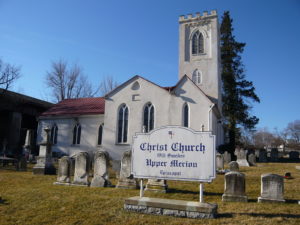Here is an article from the Philadelphia Inquirer, Sunday, October 16, 1994. It includes a few quotes from the late local, award winning, historian Ed Dybicz. Young Mr. Dybicz placed first in the annual PA Newspaper Publishers Association content for high school reporters in 1941. He received a first place cash prize of $20 for his reportorial work in the Norristown Times Herald. Two scholarship winners received $150 toward freshman year expenses in the journalism curriculum at Penn State.
SWEDESBURG The sidewalks of this little burg are lined with manicured lawns and tidy brick homes.
In the evenings the women settle themselves on the curb to watch their children ride bikes or offer gentle jibs to the husbands making their way to the firehouse for a few beers.
Located around a bend of Route 23 between Bridgeport and West Conshohocken, this all-American village – population 1,000 – is really a neighborhood almost hidden in the corner of Upper Merion Township.
But that’s the story of the modern day Swedesburg. If you had walked along those streets more than 100 years ago, you would have been joined by throngs of people as they bustled around the “hub” of Upper Merion. With its quarries and prime location on the Schuylkill, the village was the center of economic activity for Upper Merion in the 1850s.
The history of the village began in 1712, when Swedish colonists from Philadelphia settled along the Schuylkill, where they were “warmed with beauty and fertility,” according to research by Ed Dybicz, a history columnist for the Norristown Times Herald.
John and Gunnar Rambo are credited with securing the tract of land known today as Swedesburg, which was Swedesford during the Revolutionary War.
The building of Christ Church – also called Old Swedes Church – in 1760 played a major role in the eventual flourishing of Swedesburg.
The Lutheran church attracted such historic notables as George Washington and Ben Frankllin to its services. [Christ Church (Old Swedes) is the site of the King of Prussia Historical Society’s Annual Field Trip on Saturday, June 10. See our Facebook event for details.]
The church was a magnet for settlers. By the 1850s, more than 380 people lived in Swedesburg. The population continued to grow as Polish and Irish settlers discovered the area.
Many of the village’s residents found work at the lime quarries in the village. First opened in 1839 by George W. Roberts, the quarry yielded one million bushels of lime and stone a year at its peak in 1884. Eventually, the Bethlehem Limestone Co. assumed control of the quarries.
Over the years, the quarries changed hands four times before ending up in the hands of Glasgow Co. “Hardly anyone from Swedesburg works in the quarry,” said Dybicz, who has lived in the village for 71 years. “All the people have branched out into other industries. The kids became educated.”
Not only did the village lead the township in business, but it also played a prominent role in education. In 1735, the township’s first public schoolhouse was constructed on the property of Gunnar Rambo. The one-room log schoolhouse was augmented with a three-room frame building in the 1880s.
When the Upper Merion schools consolidated in 1930, the old schoolhouses were closed down, and eventually they were torn down. Today, there are no operating public schools in the village.
Not only did Swedesburg introduce public education to the township, it was also partially responsible for the development of a police force.
In the 1920s, the residents clamored for a constable to patrol the village and for the township to install street lights, but their requests were denied. The residents tried to join the neighboring Borough of Bridgeport to receive these services, but the township battled this annexation in the Pennsylvania Supreme Court and won.
It took a tragedy for the village to get its way. On April 9, 1929, grocer John Polewski, 43, was gunned down when he failed to raise his hands immediately during a robbery.
The “daring” crime, as newspaper reports of the day called it, led to further protests from the village’s residents. The minister of the Sacred Heart Church – another prominent church in Swedesburg – even went so far as to blame the crime on the township’s Board of Supervisors for failing to provide ample police protection.
The township responded swiftly, creating a police department in 1930.



